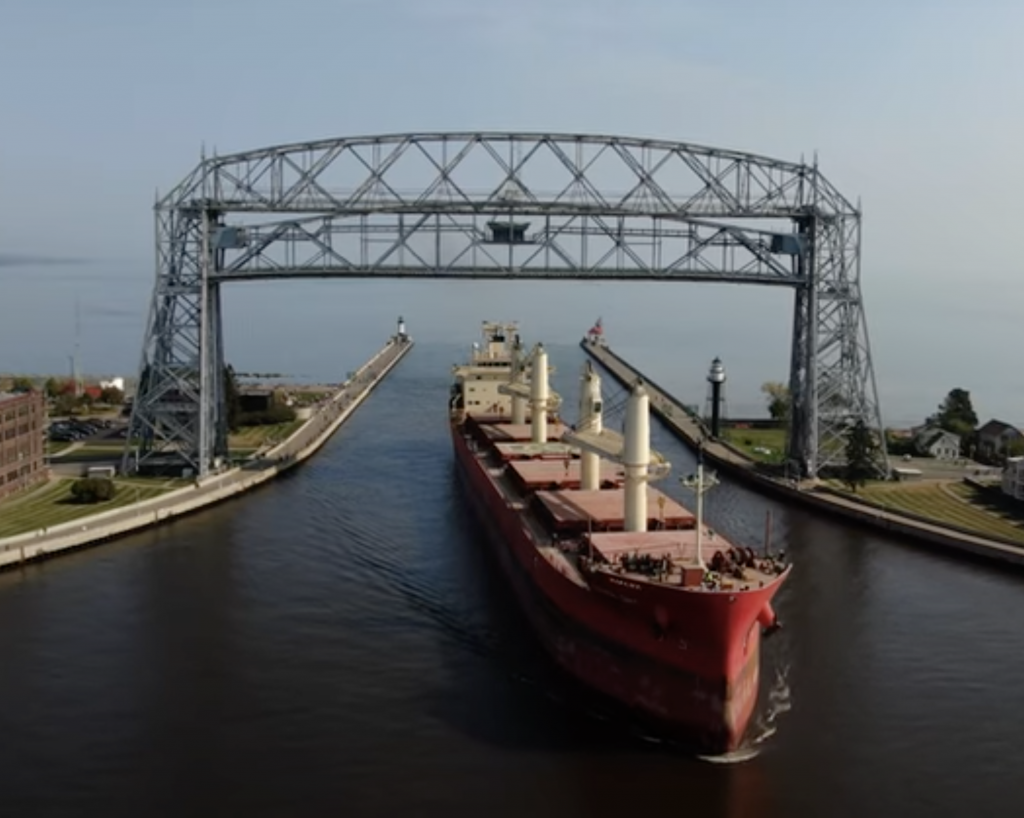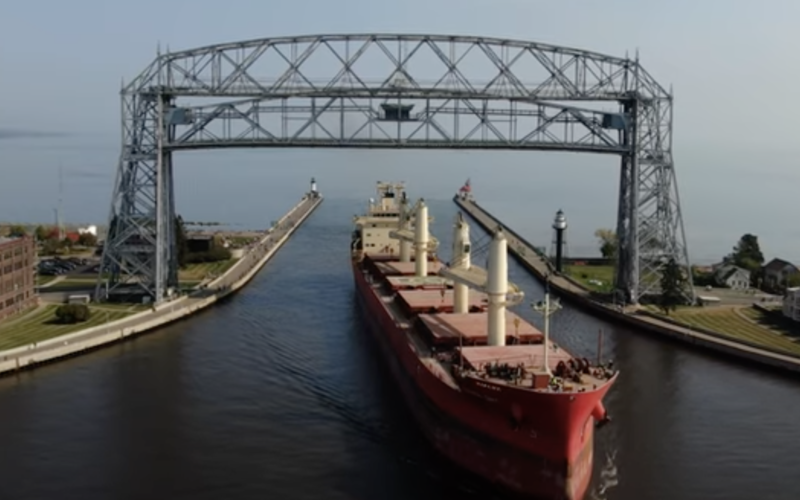(WASHINGTON) — The Great Lakes Seaway Partnership on Wednesday reported a 1.92 percent increase in traffic on the St. Lawrence Seaway from the opening of the waterway on March 22 through Oct. 31 (year to date or YTD).
An overall total of 28.49 million metric tons of cargo shipped through the Seaway. Additionally, total transits YTD reached 2,976 vessels, a 1.33 percent increase compared to transits through October last year. This consistent growth in traffic for the Great Lakes-Seaway System is evidence that the system is not experiencing the same degree of supply chain disruptions or congestion compared to coastal ports or elsewhere globally.

“In October, the Seaway system saw a noticeable increase in cargo movements, particularly during the last week of the month,” said Craig Middlebrook, deputy administrator, U.S. Great Lakes St. Lawrence Seaway Development Corp. “These next few months are typically the busiest of the Seaway’s navigation season. The harvest is in, U.S. export grain is moving through our Great Lakes ports and the Seaway. As global demand increases, we anticipate this upward trend in outbound grain shipments to continue through the end of the year.”
Toledo-Lucas County Port Authority
Through October, tonnage surpassed 9 million tons for the Port of Toledo, an increase of over 25 percent. Domestic tonnage is up over 48 percent and trade with Canada has increased by 14 percent. Iron ore, coal, general cargo and dry-bulk commodities are all tracking ahead of last year. “We have nearly surpassed our 2020 tonnage total and we’re only in October,” said Joseph Cappel, vice president, business development, Toledo-Lucas County Port Authority.
General cargo shipments for the Seaway continue to increase, showing a 65 percent increase year-over-year due to top performing ports for iron ore and steel slabs, such as Toledo. Other traditional “steel” American Great Lakes ports include Cleveland, Detroit, Milwaukee, Chicago and Burns Harbor. In total, these ports saw 10 vessel port calls with diverse steel products from approximately 10 countries.
For the Port of Toledo, most of the increase is attributed to additional domestic iron ore shipments associated with the Cleveland Cliffs direct reduction plant. However, Toledo is also experiencing increases in coal, dry bulk and general cargo. Commodities such as salt, aluminum and other bulk material have been strong this year.
“We are always working on accelerating the supply chain for these cargoes through our terminals. To that end, we have acquired and started using our new Liebherr 550 mobile harbor crane in combination with our two Liebherr 280 cranes for material handling at Midwest Terminals,” Cappel said. The new Liebherr 550 crane has lift capacity of 154 metric tons and can be utilized for project cargo, break bulk and bulk commodities. The new crane has already increased efficiency and productivity.
Port of Duluth-Superior
Overall, iron ore continues to be a standout export commodity for Seaway traffic, with a 20 percent increase year-over-year. Minnesota ports saw 11 Lakers export iron ore to the Port of Quebec for trans-shipment to high-demand countries.
Total tonnage for the Port of Duluth-Superior is tracking 2.5 percent ahead of the five-season average and 33 percent better than the COVID-slowed 2020 pace. Iron ore remained a hot commodity, with more than 2 million short tons leaving the port in October. That pushed Duluth-Superior’s season total to 16.4 million short tons, which exceeded the five-season average by 16 percent.
“The flexibility we offer shippers to switch between modes of transport to and from our multimodal general cargo terminal has been an advantage for them in navigating the global supply chain challenges of 2021,” said Deb DeLuca, executive director, Duluth Seaway Port Authority. “So far, it’s truly been a season that emphasizes the importance of supply chain reliability and versatility, and we deliver on those in Duluth-Superior.”
The Soo Locks
The Port of Toledo and its Cleveland Cliffs direct reduction plant as well as the Port of Duluth-Superior are empowered not only by the Seaway, but the Soo Locks. The Soo Locks serve as America’s connection to the global economy, allowing vessels on the Great Lakes-St. Lawrence Seaway System to freely move cargoes from the upper Great Lakes to the lower lakes. Each vessel that passes through the Locks efficiently hauls its cargoes like iron ore for steel and agricultural products for consumption to support American industries and citizens.
At a recent news conference hosted by the Great Lakes Seaway Partnership at the National Museum of the Great Lakes, the construction of a new lock at the Soo was celebrated and commemorated. Industry leaders from the U.S. Army Corps of Engineers, Lake Carriers Association, Toledo-Lucas County Port Authority, Port of Monroe, and Interlake Maritime Services were in attendance to acknowledge this important piece of infrastructure for the economy.
– Great Lakes Seaway Partnership

